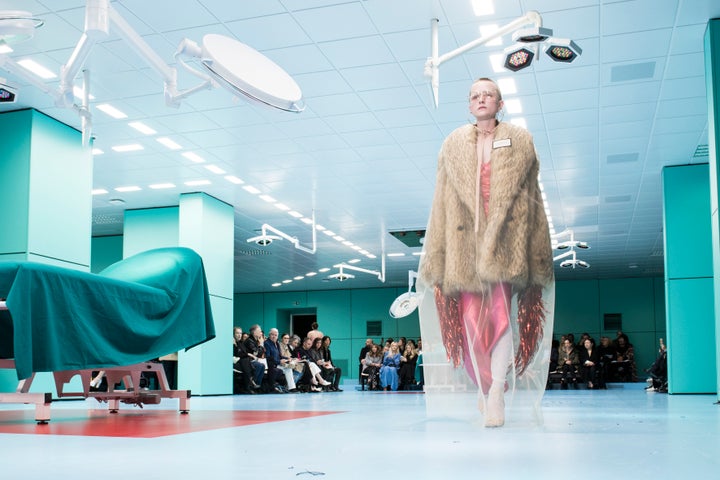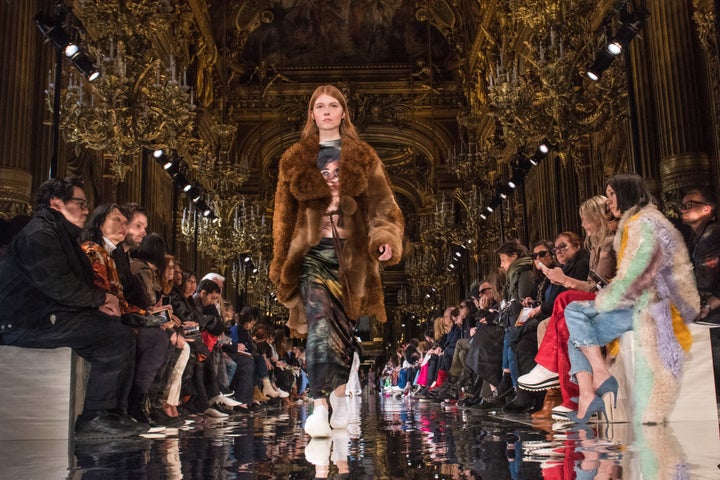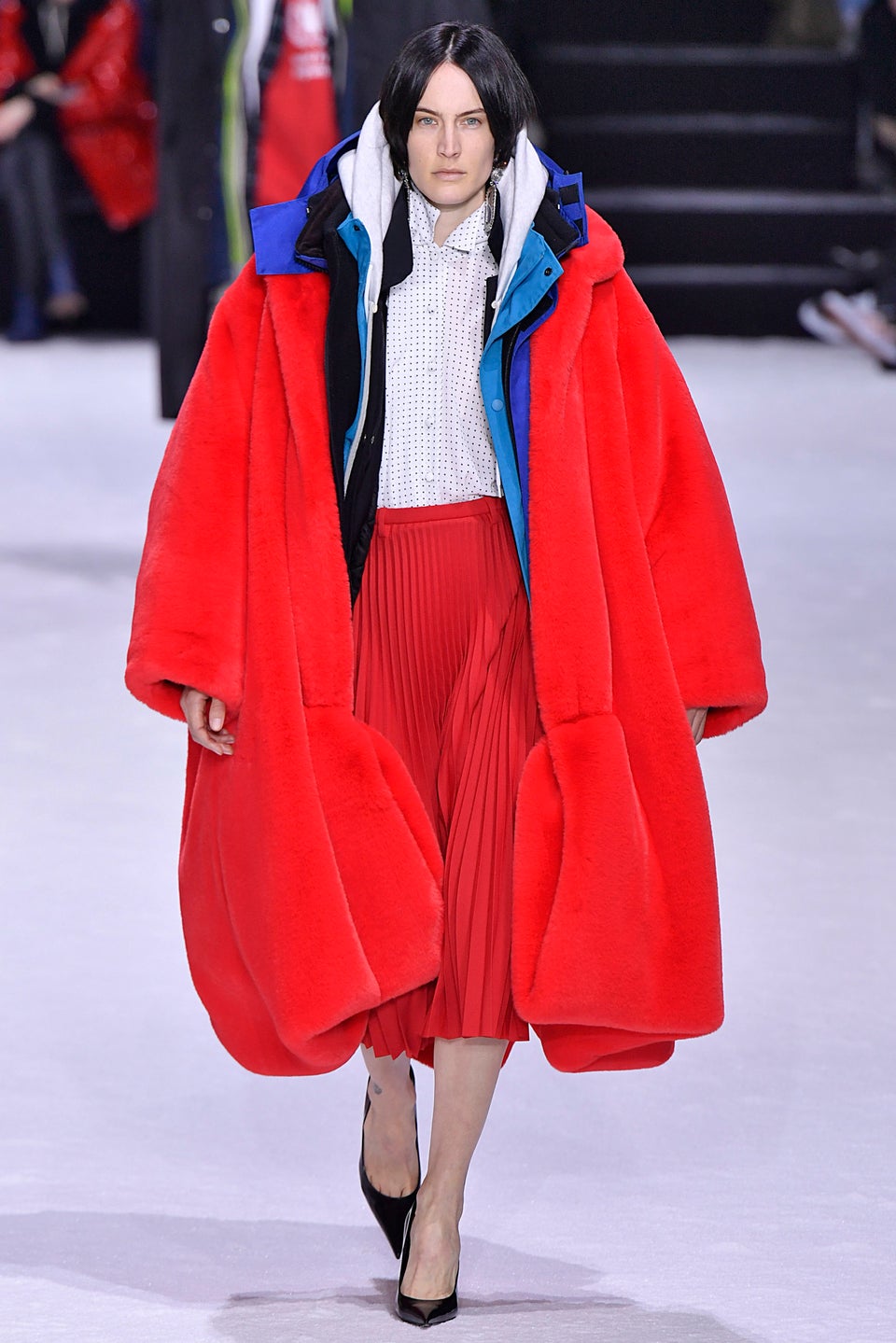
On Wednesday, luxury fashion label Diane von Furstenberg joined the growing list of designer brands going fur-free.
The brand’s chief executive officer, Sandra Campos, said in a statement to WWD that it’s time for the DVF brand to “make this change and accept responsibility to ensure that we don’t promote killing animals for the sake of fashion.” Starting in 2019, Campos said, fur, as well as exotic skins, mohair, and angora, will no longer have a place in DVF’s offerings.
The news came about a month after a similar announcement by Burberry, and about a year after Gucci announced it would go fur-free. For the past few years, the fashion industry has seen more and more brands, including Versace, Michael Kors, Ralph Lauren and Armani (among others) deciding to ditch fur.
On the surface, one may write off going fur-free as the latest fashion trend, a temporary shift that won’t last longer than a couple seasons. And that’s a valid point, seeing as fur has fallen out of, and found its way back into, fashion in the past. But things are different now than they were 20 or 30 years ago.
We’re seeing major brands go public with their anti-fur stances. We’re also being exposed to the oft-unsettling practices used by members of the fur industry. And on top of that, we’re seeing technological innovation that suggests a promising future for faux fur alternatives.
It’s not the first time fur has fallen out of fashion.
In the 1990s, supermodels like Christy Turlington were posing for PETA, declaring they’d rather go naked than wear fur. It was en vogue to be a fur-free advocate. As Sarah Ferguson wrote in New York Magazine in 1994, “Anti-fur activism is now as chic (and facile) as buying a pair of plaid thigh-highs.”
By the mid-2000s, fur had made a comeback. In 2006, The Guardian reported that from 2000 to 2004, sales of fur globally went from $9.1 billion to $11.7 billion. Up until recently, fur was a major player on the runways during fashion month. Today, the American fur market is reported to be worth more than $114 million, according to Business of Fashion, and despite the current wave of designers ditching fur, the demand for fur in the United States has risen.
So what makes the current anti-fur movement the one that might stick?
In the past, we didn’t see many major brands take a strong stance on the issue. There was Calvin Klein, an early adopter of fur-free practices, and Stella McCartney, whose line has never included fur or leather, but otherwise, many brands were silent on the issue.
Now, not only are luxury labels like Gucci, Versace and Burberry putting their fur-free policies on their websites, but they’re also sharing announcements on social media platforms like Instagram and Twitter for hundreds of thousands of followers to see. Their proclamations aren’t literally set in stone, but the permanence of the internet makes them hard to back away from.
It’s not just designers that are going fur-free. In September, the British Fashion Council confirmed the most recent installment of London Fashion Week was fur-free; none of the participating designers used real fur in their collections. In March of this year, San Francisco became the first major American city to ban fur sales, joining Berkeley, California, and West Hollywood, California.
In the early ’90s, Calvin Klein was the most notable brand with a public policy against fur. Now, according to P.J. Smith, senior manager of fashion policy at the Humane Society of the United States, “all these brands are making these public policies, and sure they can turn around and sell fur tomorrow, but it’s very difficult to reverse from having a really staunch public policy against something. Especially now that cities and countries are also having these public policies, it’s going to be very difficult for fur to ever rebound from this.”
Smith suggested that by sharing their policies on social media, luxury brands are reaching out to the next generation of luxury consumers. The feedback, he noted, has been seemingly positive.
“These companies want to be socially responsible and innovative, because the word luxury is becoming synonymous with those two things,” he said.
As the internet and social media provide a public platform for brands to share their anti-fur stances, these outlets also give consumers more access to view what goes on behind the scenes of the fur industry. All too often, what we see isn’t pretty. As a result, it’s becoming increasingly difficult to separate the gruesome realities of the fur industry from the finished products.
“We’re living in the age of transparency and fur’s importance is really dependent on the maintenance of its symbolic value,” Joshua Katcher, designer and author of Fashion Animals, told HuffPost, noting that historically, fur has been associated with royalty, wealth, power and even sex ― all things, he said, that “create a desirable formula.”
“I think what’s happening is that the symbol of fur can’t withstand the reality of fur. It’s a contradictory message. There’s nothing grand or exquisite or beautiful about the fur production process. It is horrific and painful and dirty and unnecessary,” he added. “We no longer can have a fur garment that can be seen as beautiful when the process is so ugly.”
If people weren’t exposed to the graphic videos of animals being anally electrocuted before being skinned or images of minks crammed into cages on fur farms, it would be easy to ignore such realities. But when they’re right in front of you, it’s not that simple.

Faux fur is about to make a big move.
Beyond the public announcements and sometimes overwhelming transparency the internet age has provided us, we’re reaching a point where there’s no need for real fur. As both Smith and Katcher pointed out, technological innovations are creating new alternatives that’ll only continue to improve.
“We are on the brink of some of the most exciting material innovations in the realm of biofabrication,” Katcher said. “There’s already companies that are making biofabricated silk, biofabricated leather, and it’s only a matter of time before we’ll be able to make biofabricated hair.”
It’s true. One company, called Modern Meadow, is producing leather in a lab setting by growing a strain of yeast that’s engineered to produce collagen; as The Atlantic noted, collagen is the protein that gives leather both its strength and stretch. Scientists have also created a synthetic alternative to spider silk that has similar properties to the real thing.
“It’s a very inefficient and cruel process to put a wild animal in a cage for its entire life and it’s environmentally impactful and the whole thing is just pretty gruesome,” Smith said. “If we can avoid it, I think society will move in that direction.”
When it comes to faux fur specifically, we can’t talk about it without talking about sustainability.
Those in the fur industry have been doing their part to convince consumers that real fur ― as opposed to the fake stuff, which is commonly made from plastic fibers ― is actually the more sustainable option because it came from a once-living organism.
“Fur is obviously a natural product, it biodegrades and at the moment we’re in a fashion cycle where 85 percent of fashion products end up in the landfill site within five years,” Mark Oten, CEO of the International Fur Federation, told HuffPost. “Natural fur lasts for decades. It’s not a throwaway product. And if it were to be thrown away, it biodegrades, unlike fake fur and the plastic alternatives that are being used.”
It’s true that an overwhelmingly large percentage of our clothes end up in landfills. And it’s true that a faux-fur coat that might be made from what is essentially plastic ― even if it’s recycled plastic ― isn’t going to decompose quite like a natural fiber. At the moment, faux fur isn’t necessarily doing much help with fashion’s environmental impact, but that doesn’t mean real fur is truly the more sustainable option.
As Hilary George-Parkin at Fashionista reported, anti-fur advocates have pointed to a number of factors in the fur industry that aren’t environmentally friendly, such as the CO2 emissions that result from keeping thousands of mink on one farm, or the toxic chemicals involved in dressing and dyeing fur.
In Katcher’s opinion, the fur industry’s sustainability argument is “complete misinformation” and “marketing drivel.”
“The mythology that fur is just the skin of the animal is just that. It’s mythology. You have to think about the resources it takes to house and feed and process and kill and preserve these pelts,” Katcher said. “The amount of energy it takes to breed and raise and feed and process and preserve an animal and its pelt far outweighs what would just go into a faux.”
“When you look at the long list of major designers that are going that way ― DVF, Donna Karan, Versace, Michael Kors, Gucci, Hugo Boss, Armani, Lacoste, Ralph Lauren, Tommy Hilfiger ― it’s becoming an overwhelming majority of the luxury sector that has finally decided that we don’t need fur anymore,” Katcher added. “I think it’s only a matter of time before it’s at least very much on the outskirts, if not completely obsolete.”
“There’s nothing that looks more luxurious now than going fur-free,” Smith said.
